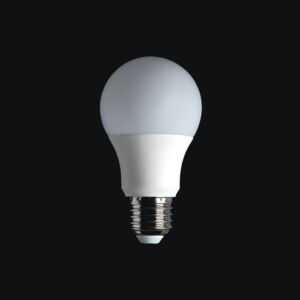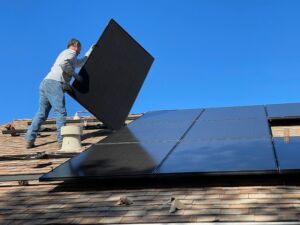

A competitive housing market makes everyone–buyers and sellers alike–look for money-saving upgrades. Eco-friendly upgrades do just that, saving energy, conserving water, and increasing energy efficiency. These changes translate into lower utility bills, higher resale values, and lower maintenance costs.

The options listed below vary in price, but they all increase the value of a home. Roberta Dakich and Janet Hiatt–the Dakich Team at Compass Reality–know first-hand how these upgrades benefit both the buyer and the seller. So if you’re thinking about selling, consider these options as you prepare. If you’re looking to buy a home, be sure to inquire about these features, which will save you money for years to come.
LED bulbs
 The light-emitting diode (LED) is more durable and lasts longer than the traditional lighting options. Moreover, lighting matters. “First impressions are everything in real estate,” says Hiatt. “You never want your home to appear dark. Replace all light bulbs with LEDs and pay close attention to the color, measured in Kelvins. I suggest nothing lower than 3000K. For brightness, go with 750 lumens or more.“
The light-emitting diode (LED) is more durable and lasts longer than the traditional lighting options. Moreover, lighting matters. “First impressions are everything in real estate,” says Hiatt. “You never want your home to appear dark. Replace all light bulbs with LEDs and pay close attention to the color, measured in Kelvins. I suggest nothing lower than 3000K. For brightness, go with 750 lumens or more.“
Insulation
Insulating a home–particularly the attic and garage–saves energy and thereby saves costs. It keeps the home cooler in the summer and warmer in the winter. According to The Energy Saving Trust, “A quarter of heat is lost through the roof in an uninsulated home.” Spray foam insulation, unlike the more traditional fiberglass pieces, has a higher R-value. That’s code for better insulation performance. It’s more expensive than fiberglass, so weigh your options.
Windows
 Again, we are talking about losing energy as opposed to retaining it. And about 30% of heating energy is lost through windows, according to The Energy Saver. Upgrading the windows of your home is a significant expense, and a major selling factor to potential buyers. Anyone who owns an old home and has sipped coffee watching the sunrise through a large front window knows the drafty breeze and the sound of the furnace working overtime. And the ensuing heating bill that follows. It doesn’t have to be that way.
Again, we are talking about losing energy as opposed to retaining it. And about 30% of heating energy is lost through windows, according to The Energy Saver. Upgrading the windows of your home is a significant expense, and a major selling factor to potential buyers. Anyone who owns an old home and has sipped coffee watching the sunrise through a large front window knows the drafty breeze and the sound of the furnace working overtime. And the ensuing heating bill that follows. It doesn’t have to be that way.
Appliances
According to Dakich, “If you need to replace or upgrade any of your appliances, choose energy-efficient models, like those that are Energy Star certified.” What appliances are Energy Star certified, you may be asking? All of them. Truly, the list is long. HVACs, televisions, ceiling fans, clothes dryers, water heaters (think tankless and/ or instant hot water systems), light fixtures (including outdoor ones!), dishwashers–the list goes on. Smart thermostats are Energy Star certified too, but “it is rare these days that we see a home without a smart thermostat,” says Hiatt.
Water Efficiency
 Water what, you ask? Water efficiency is basically finding ways to reduce the use of domestic water supplies. Solutions include some already listed in appliances, but we’re going to double dip! Aerator faucets and showerheads: these devices reduce the amount of water coming out of the faucet by mixing it with air. A front-loading clothes washer uses significantly less water, too, compared to top-loading washers. Another catchphrase to keep in mind when shopping for appliances? “High-efficiency” faucets, fixtures, and even toilets. High-efficiency plumbing fixtures will use less water than traditional fixtures.
Water what, you ask? Water efficiency is basically finding ways to reduce the use of domestic water supplies. Solutions include some already listed in appliances, but we’re going to double dip! Aerator faucets and showerheads: these devices reduce the amount of water coming out of the faucet by mixing it with air. A front-loading clothes washer uses significantly less water, too, compared to top-loading washers. Another catchphrase to keep in mind when shopping for appliances? “High-efficiency” faucets, fixtures, and even toilets. High-efficiency plumbing fixtures will use less water than traditional fixtures.
Solar Panels
 While solar panels are undoubtedly cost-saving long term, they are expensive upfront. Lucky for Hoosiers, Indiana offers tax credits for renewable energy systems.
While solar panels are undoubtedly cost-saving long term, they are expensive upfront. Lucky for Hoosiers, Indiana offers tax credits for renewable energy systems.
Plus, buyers are here for it. “We just sold a home downtown Indy with $20,000 in solar panels. It was a huge selling point and a zero dollar electric bill for the new owners.”
EV Charger
 Indy Maven loves an electric car. And if you need any convincing, we have ten reasons to consider buying one. Roberta and Janet both drive them and consider this upgrade the wave of the future.
Indy Maven loves an electric car. And if you need any convincing, we have ten reasons to consider buying one. Roberta and Janet both drive them and consider this upgrade the wave of the future.
“Even if you haven’t made the move to an electric car yet, consider having the 50amp EV charger installed in your garage, especially if you are building or adding electrical.”
Created in partnership with The Dakich Team at Compass.
The Dakich Team is a team of real estate agents affiliated with Compass, a licensed real estate broker who abides by federal, state, and local equal housing opportunity laws.
Maura Malloy is a writer, minimalist, TedX Talker, and Indy Maven’s Assistant Editor.
All of our content—including this article—is completely free. However, we’d love if you would please consider supporting our journalism with an Indy Maven membership.










